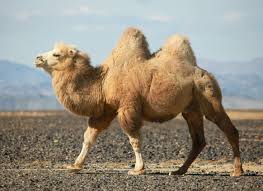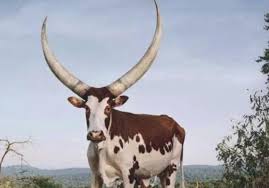Ivermectin pour-on solution
Brand Name:
Ivermectin pour-on solution
Indications & Uses:
Parasites
Dosage Forms:
Liquid Solution
Name:
Ivermectin Pour-on Solution
Common Capacity:
250ml, 500ml, 1000ml, 2.5L, 5L [Depending on manufacturer and specific product]
Applicable Animals:
Global Livestock Application:
- Cattle (Pastured and Feedlot): Beef cattle, Dairy heifers (non-lactating)
- Sheep: Lambs, Ewes, Rams
- Goats: Kids, Does, Bucks
- Swine: Breeding sows and gilts, Boars, Growing-finishing pigs (less common for large scale, but some products for individual treatment)
- Reindeer / Caribou (common in specific regions)
- Other special farming animals susceptible to external or internal parasites for which pour-on is indicated.
Usage and Dosage:
For external parasitic control and internal parasite treatment. Applied topically along the backline of the animal.
- Cattle:
- External and Internal Parasites: Typically 500 mcg (0.5 mg) Ivermectin per kg body weight.
- For a 0.5% (5 mg/ml) pour-on solution: Apply 1 ml per 10 kg body weight.
- For a 0.05% (0.5 mg/ml) pour-on solution: Apply 1 ml per 1 kg body weight.
- Application Example: For a 200 kg calf, apply 20 ml of 0.5% solution. For a 500 kg adult cattle, apply 50 ml of 0.5% solution.
- Frequency of treatment depends on parasite challenge and product instructions, typically a single application is sufficient, repeating if necessary based on re-infestation pressure.
- Sheep:
- External and Internal Parasites: Similar to cattle, typically 500 mcg (0.5 mg) Ivermectin per kg body weight.
- For a 0.5% (5 mg/ml) pour-on solution: Apply 1 ml per 10 kg body weight.
- Application Example: For a 30 kg lamb, apply 3 ml of 0.5% solution. For a 60 kg ewe, apply 6 ml of 0.5% solution.
- Ensure proper wool parting for skin contact.
- Goats:
- External and Internal Parasites: Dosage typically aligns with sheep/cattle, around 500 mcg (0.5 mg) Ivermectin per kg body weight.
- For a 0.5% (5 mg/ml) pour-on solution: Apply 1 ml per 10 kg body weight.
- Note: Absorption can be variable in goats; consult specific product recommendations and consider veterinary advice for severe infestations.
- Swine:
- External and Internal Parasites (e.g., mange mites, lice, roundworms, lungworms): Dose rate similar to injection, often 1 mg Ivermectin per kg body weight. Note: Pour-on for swine is less common than injectable forms for internal parasites, primarily used for external parasites.
- For a 0.5% (5 mg/ml) pour-on solution: Apply 2 ml per 10 kg body weight (delivering 1 mg/kg).
- Application: Apply a narrow strip of the solution along the backline from the snout to the base of the tail.
Accurate weighing of animals is crucial for correct dosing. Do not apply to wet or dirty hides, as this can reduce efficacy.
Applicable Diseases and Symptoms:
- Internal Parasites:
- Gastrointestinal Roundworms: Ostertagia spp., Haemonchus placei, Trichostrongylus spp., Cooperia spp., Oesophagostomum radiatum, Nematodirus helvetianus, Bunostomum phlebotomum, Strongyloides papillosus.
- Lungworms: Dictyocaulus viviparus.
- Other Internal Parasites (depending on product claims): Some tapeworms, liver flukes (though less effective than specialized flukicides).
- External Parasites:
- Mites: Sarcoptic mange mites (Sarcoptes scabiei), Psoroptic mange mites (Psoroptes ovis), Chorioptic mange mites (Chorioptes bovis), Demodectic mites (Demodex bovis).
- Lice: Sucking lice (Linognathus vituli, Haematopinus eurysternus, Solenopotes capillatus), Biting lice (Damalinia bovis).
- Flies: Horn flies (Haematobia irritans), certain biting flies and nuisance flies (as a aid in control).
- Ticks: Some Boophilus and other tick species, depending on product claims and region.
- Symptoms: Poor growth, weight loss, rough hair coat, scratching, rubbing, lesions on skin, anemia, reduced feed efficiency, respiratory issues (for lungworm).
Precautions:
- General: For topical use only. Do not administer orally or by injection.
- Application: Apply to clean, dry skin. Avoid applying to areas where skin lesions or wounds are present. Do not allow animals to lick the solution off themselves or other animals.
- Weather Conditions: Do not apply during rain or if rain is expected within 2 hours of treatment, as efficacy may be reduced.
- Resistance: Regular use may contribute to anthelmintic resistance. Implement a parasite control program in consultation with a veterinarian, including fecal egg count reduction tests (FECRT) and rotational use of different classes of anthelmintics.
- Dosage Accuracy: Use an accurately calibrated pour-on applicator. Underdosing may lead to resistance development and ineffective treatment. Overdosing can lead to adverse effects.
- Environmental Safety: Ivermectin is highly toxic to aquatic organisms. Prevent run-off into ditches, streams, or ponds. Dispose of empty containers properly.
- Human Safety: Avoid direct contact with skin and eyes. Wear protective clothing, impermeable gloves, and eye protection when handling the product. Wash hands thoroughly with soap and water after handling.
- Withdrawal Periods: Observe strict withdrawal periods for meat and milk as stated on the product label. Do not use in animals producing milk for human consumption unless specifically indicated otherwise on the label for lactating animals with applicable withdrawal.
Contraindications:
- Do not use in animals with known hypersensitivity to ivermectin.
- Do not administer to calves less than 8 weeks of age unless specified by the product.
- Some formulations may not be suitable for young, debilitated, or severely stressed animals; consult product label.
- Do not use in dairy cattle of breeding age or dairy heifers within 21 days of calving if their milk is for human consumption, unless the specific product is labeled for lactating dairy cows with a zero-day milk withdrawal.
- Do not apply to animals during rainy weather or when their hide is wet.
Post-Treatment Care:
- Monitor Animals: Observe treated animals for any signs of adverse reactions.
- Pasture Management: Implement rotational grazing or pasture resting to reduce re-infestation pressure from internal parasites.
- Quarantine: Isolate and treat newly introduced animals before introducing them to the main herd/flock to prevent introduction of resistant parasites.
- Hygiene: Maintain good hygiene practices in animal housing and handling facilities to reduce external parasite burdens.
- Nutrition: Provide adequate nutrition to support the animal’s immune system and recovery from parasitic burden.
- Follow-up Testing: Consider conducting post-treatment fecal egg counts to confirm treatment efficacy and detect potential resistance.
Applicable Animals
Animal species suitable for this veterinary medication

